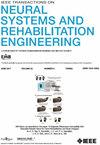基于信心驱动的动态时空卷积网络增强神经退行性疾病诊断
IF 4.8
2区 医学
Q2 ENGINEERING, BIOMEDICAL
IEEE Transactions on Neural Systems and Rehabilitation Engineering
Pub Date : 2025-04-28
DOI:10.1109/TNSRE.2025.3564983
引用次数: 0
摘要
动态脑网络在描述脑功能连接的演变模式方面比静态网络更有效,使其成为诊断神经退行性疾病的更有前途的工具。然而,现有的动态脑网络分类方法往往依赖于滑动窗口来提取多窗口特征,由于这些窗口之间的时空耦合以及有效整合复杂拓扑特征的能力有限,导致分类性能不理想。为了解决这些限制,我们提出了一种新的方法,称为信心驱动的动态时空卷积网络(CD-DSTCN)。首先,我们提出的方法采用时空卷积网络与时间注意机制相结合来提取每个窗口内的时空特征。通过在空间卷积过程中跨时间窗口传播信息,该方法有效地捕获和集成了复杂的时空依赖关系。其次,每个窗口生成一个输出概率,该概率基于真实类概率(TCP)量化预测置信度。这个置信度分数作为一个权重来评估不同时间窗口的相对重要性。最后,将置信度加权融合特征通过多层感知器进行最终分类。在阿尔茨海默病和帕金森病数据集上的大量实验表明,所提出的方法优于最先进的算法,可以为脑部疾病诊断提供有价值的生物标志物。我们的代码可以在https://github.com/YNingCode/CD-DSTCN上公开获得本文章由计算机程序翻译,如有差异,请以英文原文为准。
Enhancing Neurodegenerative Disease Diagnosis Through Confidence-Driven Dynamic Spatio-Temporal Convolutional Network
Dynamic brain networks are more effective than static networks in characterizing the evolving patterns of brain functional connectivity, making them a more promising tool for diagnosing neurodegenerative diseases. However, existing classification methods for dynamic brain networks often rely on sliding windows to extract multi-window features, leading to suboptimal performance due to the spatio-temporal coupling on these windows and limited ability to effectively integrate complex topological features. To address these limitations, we propose a novel method called Confidence-Driven Dynamic Spatio-Temporal Convolutional Network (CD-DSTCN). First, our proposed method employs a spatio-temporal convolutional network integrated with a temporal attention mechanism to extract spatio-temporal features within each window. By propagating information across temporal windows during spatial convolution, the method effectively captures and integrates complex temporal and spatial dependencies. Second, each window generates an output probability, which quantifies prediction confidence based on the true class probability (TCP). This confidence score serves as a weight to assess the relative importance of different time windows. Finally, the confidence-weighted fused features are passed through a multilayer perceptron (MLP) for final classification. Extensive experiments on Alzheimer’s and Parkinson’s datasets show that the proposed method outperforms the state-of-the-art algorithms and can provide valuable biomarkers for brain disease diagnosis. Our code is publicly available at: https://github.com/YNingCode/CD-DSTCN
求助全文
通过发布文献求助,成功后即可免费获取论文全文。
去求助
来源期刊
CiteScore
8.60
自引率
8.20%
发文量
479
审稿时长
6-12 weeks
期刊介绍:
Rehabilitative and neural aspects of biomedical engineering, including functional electrical stimulation, acoustic dynamics, human performance measurement and analysis, nerve stimulation, electromyography, motor control and stimulation; and hardware and software applications for rehabilitation engineering and assistive devices.

 求助内容:
求助内容: 应助结果提醒方式:
应助结果提醒方式:


